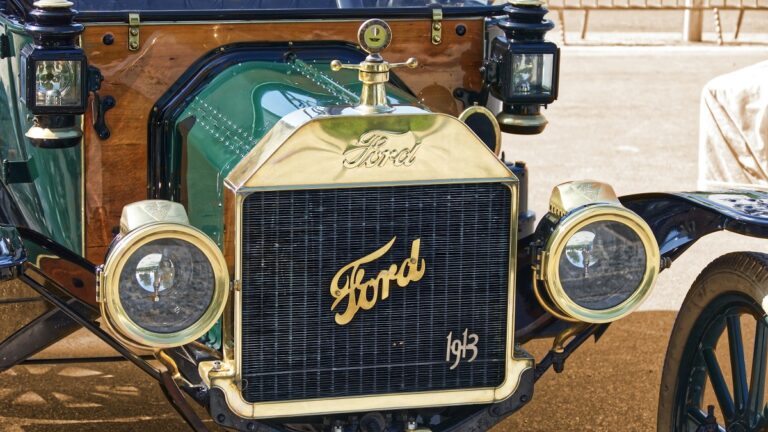In the previous section, we examined how industry 1.0 started, the important inventors living in the industry 1.0 period and the technologies they developed. On the road from Industry 1.0 to 4.0, now it’s time to examine the industry 2.0. When did the Second Industrial Revolution in history begin? Let’s take a look together.
Industry 2.0 ( 1871 – 1914 )
Start year ; 1871
Finish year ; 1914
Leading countries ; England and USA
In the Second Industrial Revolution when electrical technology developed and was used in production, this new technology superior to steam power ensured that the machines are further advanced and the production increased greatly. Thus, the world became aware of the concept of mass production. By the beginning of the 20th century, electricity became the primary source of power. Large scale Power Generation, Steel, Rail, Dyeing, Paper, Petroleum and Automobile industries were all created during this global surge in industrialization, which would define an unprecedented period of economic growth, improved living standards and productivity.
Electrification & Telecommunications
Electrification allowed the final major developments in manufacturing methods of the Second Industrial Revolution, namely the assembly line and mass production. Electrification was called “the most important engineering achievement of the 20th century” by the National Academy of Engineering.[29] Electric lighting in factories greatly improved working conditions, eliminating the heat and pollution caused by gas lighting.
Various forms of incandescent light bulbs had numerous inventors. These were invented by Joseph Swan in 1878 in Britain and by Thomas Edison in 1879 in the US. Edison’s lamp was more successful than Swan’s. Swan’s house, in Low Fell, Gateshead, was the world’s first to have working light bulbs installed.

Thomas Alva Edison (February 11, 1847 – October 18, 1931) was an American inventor and businessman who has been described as America’s greatest inventor.He developed many devices in fields such as electric power generation, mass communication, sound recording, and motion pictures.These inventions, which include the phonograph, the motion picture camera, and early versions of the electric light bulb, have had a widespread impact on the modern industrialized world. He was one of the first inventors to apply the principles of organized science and teamwork to the process of invention, working with many researchers and employees. He established the first industrial research laboratory.
Mikhail Dolivo-Dobrovolsky introduced the first three-phase induction motor in 1890.
The first AC power station was built by the English electrical engineer Sebastian de Ferranti in London. It was the first truly modern power station, supplying high-voltage AC power that was then “stepped down” with transformers for consumer use on each street. This basic system remains in use today around the world.
The first commercial telegraph system was installed by Sir William Fothergill Cooke and Charles Wheatstone in May 1837 between Euston railway station and Camden Town in London.
The telephone was patented in 1876 by Alexander Graham Bell, and like the early telegraph, it was used mainly to speed business transactions.
James Clerk Maxwell (13 June 1831 – 5 November 1879) was a Scottish scientist in the field of mathematical physics. Maxwell is regarded as a founder of the modern field of electrical engineering. His most notable achievement was to formulate the classical theory of electromagnetic radiation, bringing together for the first time electricity, magnetism, and light as different manifestations of the same phenomenon. Maxwell’s equations for electromagnetism have been called the “second great unification in physics” where the first one had been realised by Isaac Newton.In the millennium poll—a survey of the 100 most prominent physicists—Maxwell was voted the third greatest physicist of all time, behind only Newton and Einstein.The telephone was patented in 1876 by Alexander Graham Bell, and like the early telegraph, it was used mainly to speed business transactions.
James Clerk Maxwell (13 June 1831 – 5 November 1879) was a Scottish scientist in the field of mathematical physics. Maxwell is regarded as a founder of the modern field of electrical engineering. His most notable achievement was to formulate the classical theory of electromagnetic radiation, bringing together for the first time electricity, magnetism, and light as different manifestations of the same phenomenon. Maxwell’s equations for electromagnetism have been called the “second great unification in physics” where the first one had been realised by Isaac Newton.In the millennium poll—a survey of the 100 most prominent physicists—Maxwell was voted the third greatest physicist of all time, behind only Newton and Einstein.
Automobile
German inventor Karl Benz patented the world’s first automobile in 1886. Benz began to sell the vehicle in the late summer of 1888, making it the first commercially available automobile in history.
Henry Ford built his first car in 1896. he solution that Ford Motor developed was a completely redesigned factory with machine tools and special purpose machines that were systematically positioned in the work sequence. All unnecessary human motions were eliminated by placing all work and tools within easy reach, and where practical on conveyors, forming the assembly line, the complete process being called mass production. This was the first time in history when a large, complex product consisting of 5000 parts had been produced on a scale of hundreds of thousands per year. The savings from mass production methods allowed the price of the Model T to decline from $780 in 1910 to $360 in 1916. In 1924 2 million T-Fords were produced and retailed $290 each.
The moving assembly line helped industrialists to make high-quality products without the need for highly skilled workers.

Iron and steel
Patented in 1856 by Henry Bessemer, the process significantly reduced the cost and increased the speed of steel production at a time when the demand for steel in railway construction and machine tools was expanding significantly. Other inventions ;
1828 James Beaumont – Scottish – The hot blast technique
1857 Edward Alfred Cowper – British – Cowper stove
1857 Sir Charles William Siemens – German/British & 1865 Pierre-Émile Martin – French – Siemens–Martin process
As a result of all these inventions ; The availability of cheap steel allowed building larger bridges, railroads, skyscrapers, and ships. With large amounts of steel it became possible to build much more powerful guns and carriages, tanks, armored fighting vehicles and naval ships.
Rail
In 1857 Robert Forester Mushet was a Britisj metallurgist , was the first to make durable rails of steel rather than cast iron, providing the basis for the development of rail transportation throughout the world in the late nineteenth century. The first of Mushet’s steel rails was sent to Derby Midland railway station, where it was laid down at a particularly heavily used part of the station approach where the iron rails had to be renewed at least every six months, and occasionally every three. Six years later, in 1863, the rail seemed as perfect as ever, although some 700 trains had passed over it daily.

Other inventions
Synthetic dye was discovered by English chemist William Henry Perkin in 1856.
In 1841, Joseph Whitworth created the world’s first national machine tool standard called British Standard Whitworth.
The vulcanization of rubber, by American Charles Goodyear and Englishman Thomas Hancock in the 1840 s paved the way for a growing rubber industry, especially the manufacture of rubber tyres
The modern bicycle was designed by the English engineer Harry John Lawson in 1876, although it was John Kemp Starley who produced the first commercially successful safety bicycle a few years later. Its popularity soon grew, causing the bike boom of the 1890 s.

Final Words
The human history, which met with steam in Industry 1.0, continued its development with electricity in industry 2.0. In the Industry 2.0 period, human beings continue their lives on land and sea. Developments in train, sea and land transportation allowed the products produced to be sent to different countries of the world, thus the commercial life developed. The electricity industry took the leading role in the 2.0 era. Human communication started in the industry 2.0 era with the spread of telegraphs and telephones. We can see that the inventions that took place in the Industry 2.0 era form the basis of today’s technologies. As always, we would like to thank all these inventors.
References
*https://en.wikipedia.org/wiki/Fourth_Industrial_Revolution#:~:text=The%20term%20%22Industrie%204.0%22%2C,year%20at%20the%20Hannover%20Fair.
*https://www.desouttertools.com
*https://www.researchgate.net/publication/330336790_INDUSTRY_10_TO_40_THE_EVOLUTION_OF_SMART_FACTORIES – Jeevitha Thangaraj – Ramya Lakshmi Narayanan
*https://www.essentracomponents.com/en-gb/news/news-articles/the-journey-to-industry-40
*https://www.sanayidegelecek.com
*https://www.azquotes.com/author/1156-Alexander_Graham_Bell
*https://www.jeffbullas.com/teach-us-about-failure/
*Photo by Pascal Bernardon on Unsplash
*Photo by Anthony Tran on Unsplash
*Photo by Eliza Diamond on Unsplash

